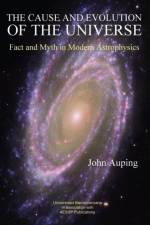- Fact and Myth in Modern Astrophysics
von John Auping
117,00 €
The work of Dr John Auping seeks to assist readers to differentiate observationally verified aspects of cosmology from ideas whose verification is distant, or perhaps impossible. Such a task is performed by using a careful application of the orthodox scientific method. This English edition is a part of Auping's original work especially devoted to the description of the dynamics of stars, and the analysis of the Big Bang, steady state and multiverse models from a critical point of view. The author approaches different aspects of the evolution of the Universe using different branches of astrophysics, Newtonian mechanics, nuclear physics, thermodynamics, quantum physics and general relativity, with a clear and concise narrative. Mathematical boxes support the deeper study of mathematical-physical relations, which can be omitted by readers who are not specialised. The mix of science, science fiction and metaphysics in modern cosmology is analysed with strict hard core scientific arguments. The history of cosmology reveals ideas, many times antagonistic, both at the level of the interpretation of astrophysical observations, and at the level of the speculations about the origin of the Universe and the fine-tuning of its physical constants, that made it possible that we are here to discuss it. The search for the truth about the origin of the Universe necessarily touches on philosophical issues. Firstly, starting from Popper's philosophy of science, the author clarifies where exactly the frontier lies between science, science fiction and metaphysics. It then appears that in the final analysis of the scientific fact of fine-tuning present in the Big Bang, we are left with only two rational options to explain it: a multiverse, which the author shows to be science fiction, sometimes with a-theological intentions; or an intelligent cause, which is part of the discourse in the frontier of physics and metaphysics, with obvious theological implications. The dialogue between faith and science is expressed clearly and objectively in this work, where the observable and the logically demonstrable, set the pattern of what is true.

